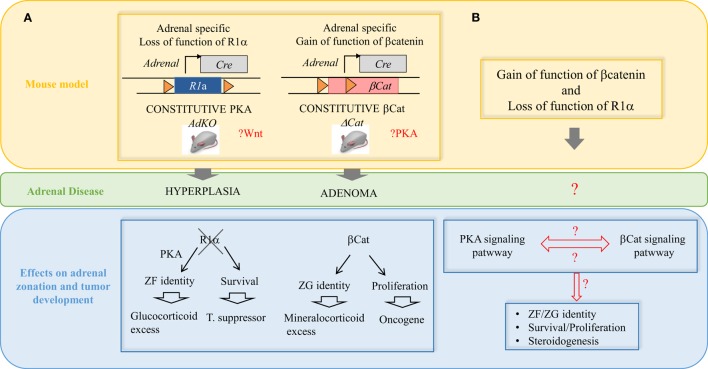Figure 3.
Interplay between the WNT/β-catenin and the cAMP/PKA pathways in the pathogenesis of adrenal hyperplasias and tumors. (A) Two mouse models recapitulating some of the most frequent alterations found in adrenal tumors in patients. AdKO mice developed cortical hyperplasia as a result of constitutive PKA activation due to gene inactivation of R1a regulatory subunit of PKA. The increased PKA signaling also favored zona fasciculata cell identity and glucocorticoid excess. ΔCat mice developed cortical adenoma as a result of constitutive b-catenin due to deletion of exon 3 in the gene encoding the b-catenin (Ctnnb1) leading to protein stabilization. Increased b-catenin activation also induced ectopic differentiation of zona glomerulosa and aldosterone excess. (B) Our models demonstrated that Prkar1a is a tumor suppressor and Ctnnb1 is an adrenal oncogene but secondary genetic alterations are required for malignant progression. A possible interplay between the WNT/β-catenin and the cAMP/PKA pathways in the adrenal cortex zonation and tumorigenesis is an important point to further investigate. The question can be genetically addressed by using compound transgenic mice based on previous available models and carrying both β-catenin and PKA constitutive activation.

